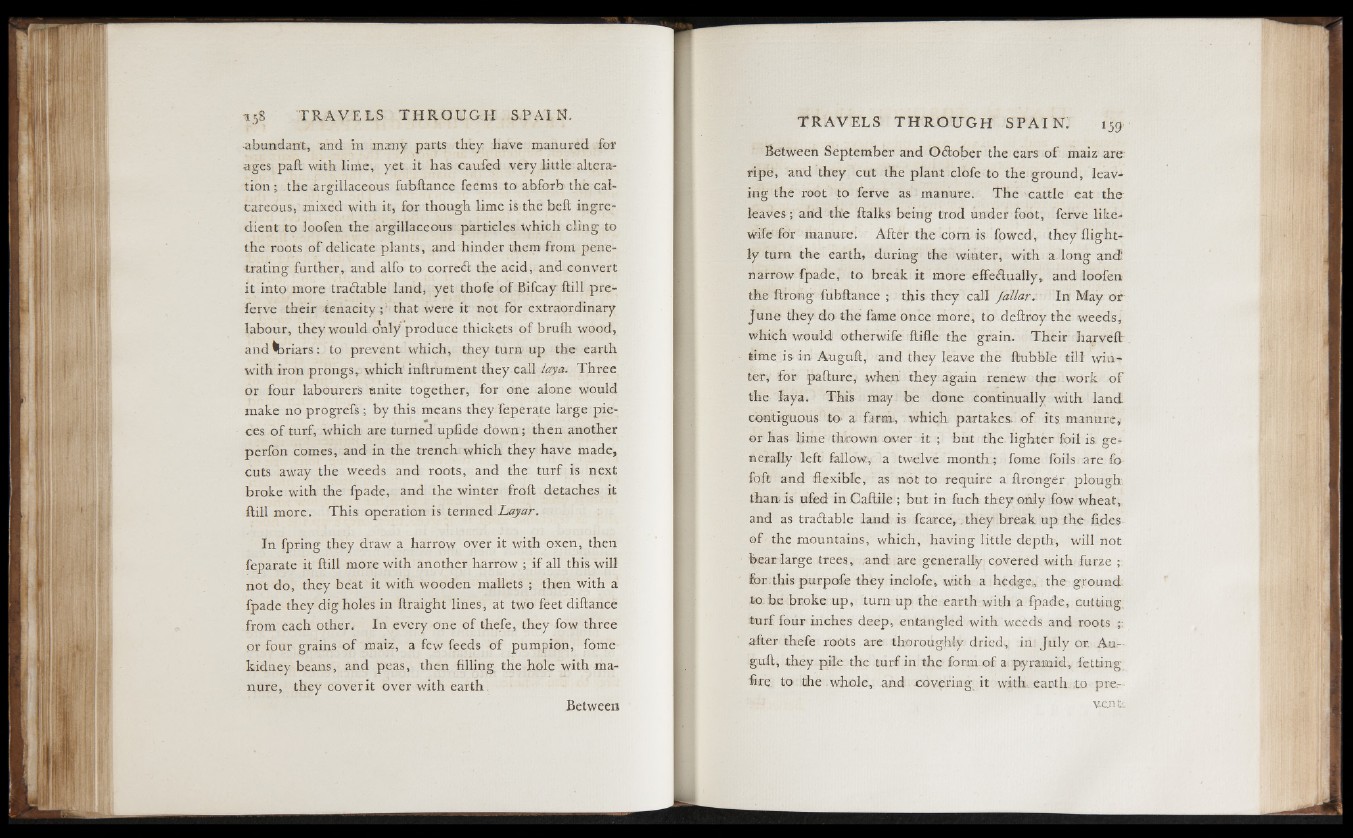
-abundant, and in many parts they have manured for
ages pail with lime, yet it has caufed very little alterar
tion; the argillaceous fubftance feems ’ O to abforb the calcareous,
mixed with it, for though lime is the bell ingredient
to loofen the argillaceous particles which cling to
the roots of delicate plants, and hinder them from penetrating
further, and alfo to corred the acid, and convert
it into more tradable land, yet thofe of Bifcay ftill pre-
ferve their tenacity that were it not for extraordinary
labour, they would o’nly produce thickets of bruih wood,
and briars: to prevent which, they turn up the earth
with iron prongs, which inftrument they call laya. Three
or four labourers unite together, for one alone would
make no progrefs ; by this means they feperate large pieces
o f turf, which are turned upiide down; then another
perfon comes, and in the trench, which they have made,
cuts away the weeds and roots, and the turf is next
broke with the fpade, and the winter froit detaches it
ftill more. This operation is termed Layar.
In fpring they draw a harrow over it with oxen, then
feparate it ftill more with another harrow ; if all this will
not do, they beat it with wooden mallets ; then with a
fpade they dig holes in ftraight lines, at two feet diftance
from each other. In every one of thefe, they fow three
or four grains of maiz, a few feeds of pumpion, fome
kidney beans, and peas, then filling the hole with manure,
they coverit over with earth,
Between
Between September and Odober the ears o f maiz are
ripe, and they cut the plant clofe to the ground, leav*
ing the root to ferve as manure. The cattle eat the
leaves; arid the ftalks being trod under foot, ferve like-
wife for manure. After the com is fowed, they (lightly
turn the earth, during the winter, with a long and
narrow fpade, to break it more effectually, and loofen
the ftrong fubftance ; this they call fallar. In May or
June they do the fame once more, to deftroy the weeds,
which would otherwife ftifle the grain. Their harveft
time is-in Auguft, and they leave the ftubble till winter,
for pafture, when they again renew the work o f
the laya. This may be done continually with land
contiguous to a farm, . which partakes, o f its manure,
or has lime thrown over it ; but the lighter foil is generally
left fallow, a twelve month.; fome foils are fo
foft and flexible, as not to require a ftronger plough,
than is ufed in Caftile ; but in fuch they only fow wheat,
and as tradable land is fcarce,. they break up the fides
©f the mountains, which, having little depth, will not
bear large trees, and are generally covered with furze ;:
for this purpofe they inclofe, with a hedge, the ground
to be broke up, turn up the earth with a fpade, cutting,
turf four inches deep, entangled with weeds and roots
after thefe roots are thoroughly dried, in July or. Auguft,
they pile the turf in the form of a pyramid, fettjng
fire, to the whole, and covering it with earth to preve.
n L.